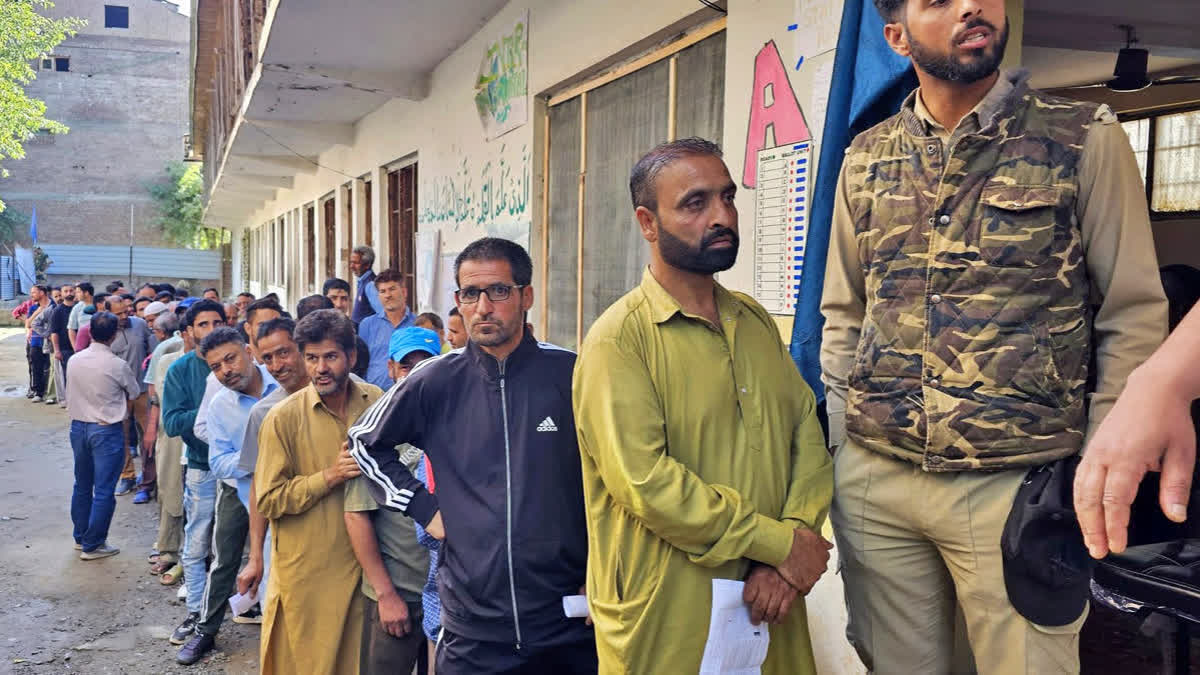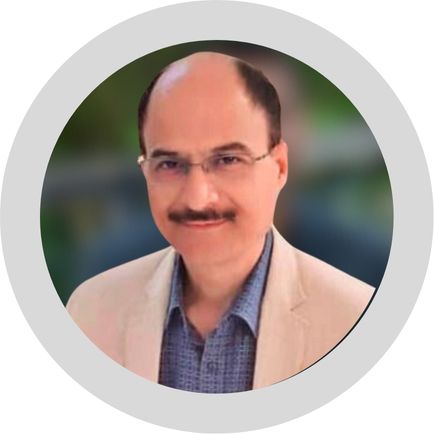Kashmir stayed away from polls for decades, figuring at the bottom of turnout tables, marking abysmally low figures, and marring the electoral process as the valley battered waves after waves of political turmoil.
Polling day was the one to stay indoors, as casting a vote and getting finger inked could mean playing with one's life. Not any more. The tables have turned as the voting figures have shown an overwhelming uptick in the ongoing Lok Sabha elections.
Sample this: The Baramulla Lok Sabha constituency that went to polls in phase 5 of parliamentary elections on May 20 recorded nearly 60 percent voting, the highest since the 1967 parliamentary election.
Any psephologist would call these numbers extraordinary. In the 2019 Lok Sabha polls, the constituency recorded a meagre 34.89 percent turnout. What is fascinating this time is how segments in this constituency that were once considered militancy-prone have come out to exercise their democratic right. For instance, once volatile Pattan, Handwara, and even Trehgam (the birthplace of JKLF founder Maqbool Bhat) assembly segments logged over 60 percent turnout this time.
It is indeed a happy moment for India as a nation. The democratic process to form governments in the country since the end of British rule was almost missing in Kashmir, especially since 1987.
While the entire country would celebrate the electoral festival, Kashmir would wear a deserted look and bloodshed would be unleashed on the streets of the valley. Polls were largely cosmetic, and since the campaign was absent, candidates barely saw their voters.
There was a huge disconnect between the rulers and those who were being ruled. This gap grew even wider after poll boycott calls were made by separatist organisations. People stayed away since it was widely accepted that casting a vote would agitate secessionists and threaten one's life.
The separatist camp had itself emerged from elections and knew the value of a vote for a politician running for office. People like Syed Salahuddin (Chief of Hizbul Mujahideen) and Syed Ali Shah Geelani (former Hurriyat chief) were in the fray in 1987 polls when jailed separatist leader Mohammad Yasin Malik ran a campaign as a polling agent for them.
They contested on Muslim United Front (MUF) symbol, pen and pot. The same symbol was adopted after a decade by Peoples Democratic Party of Mufti Mohammad Sayeed, now led by his daughter Mehbooba Mufti, former chief minister of erstwhile state of Jammu and Kashmir.
The entire MUF leadership went out of control after they lost the elections, accusing the National Conference led by Farooq Abdullah of rigging the polls. Various political groups had teamed up to fight elections against the National Conference in an effort to end their rule. Similar forces banded together to establish separatist parties to support separatism.
Seeing red, the first thing they did was to declare the elections as an illegitimate process and those participating as nonentities. As fear ruled the roost, people's representation in parliament or state assembly was the first casualty, as those declared winners were backed by a minuscule number of voters.
Most of the people in the entire region kept away from elections. State elections held after 1987 were mostly driven by heavy security deployment, low voter turnout, and hardly any on-the-ground canvassing.
As a result, there was never a celebratory environment. Tension would grip the valley immediately after the election dates were announced. A general understanding until 2024 was that a large chunk of people in Kashmir had not cast a ballot since 1987. For over thirty years, people could not exercise their right to vote. Kashmir's first-time voter could be a person in his 50s, unlike the rest of India, where first-time voters are young people who have reached the voting age.
It was a long wait for the average Kashmiri, who would feel snubbed and view victory or defeat of any regional or national party as a cruel joke played on him. Elections were dotted with violence and shutdowns in Kashmir's ten districts. This time, however, there was a sense of ease in the air. People who would once avoid cameras at all costs as they voted are now posting selfies with inked fingers on social media, reflecting the paradigm shift.
Voters queued up to cast their votes for the candidates of their choice on the same streets and polling stations that were largely empty earlier. The other striking aspect in these elections was how leaders of a politico-religious group that stayed away from polls and advised people to do the same in the past, were seen showing interest in the electoral process.
Not just voters, the government officials deputed to carry out elections also heaved a sigh of relief. In the past, several such officials lost their lives while performing their duties in Kashmir. The bereaved had no rights to mourn if the deceased belonged to a particular side. The mourner would bury the dead in silence. Teachers and government officials manning polling stations would remain on the knife's edge until the voting ended. Their family members would murmur prayers for their safe return home. Fingers inked with black would be chopped off if seen after elections. Poll workers would witness the dance of death on Kashmir's streets.
Juxtapose those days with 2024, and one can easily call it a remarkable turnaround in Kashmir's political history. One that has, to everyone's surprise, come just five years after the abrogation of Article 370 in 2019. Now that the entire valley is celebrating polls no differently from any other place, it becomes important to understand what influences people's voting decisions and why. The primary question remains: has the bargain level been reduced to statehood or the vote for change?
Kashmir is too small a place to matter at the centre for a change of guard. It might not even have much of an impact on persuading the party that gains power to restore statehood. The number is so small that it bears little significance to the 543-member house. Kashmiris would like to think otherwise. They would want their ballot to have some influence. The least they can get this time is parliamentarians whom they know and have voted for.
Read More
- Phase 5: Baramulla Records Highest Polling Since 1967; Mumbai Seats Fare Poorly, Yet Again | As It Happened
- Once Hotbed of Militancy Sopore's Brath Village Voted in Heavy Numbers for First Time
- Lok Sabha Election 2024: LeT Militant's Brother Casts Vote in Jammu and Kashmir's Baramulla
- Anyone Joining Mainstream Politics Is Welcome: Ghulam Nabi Azad on Jamaat's Electoral Entry



